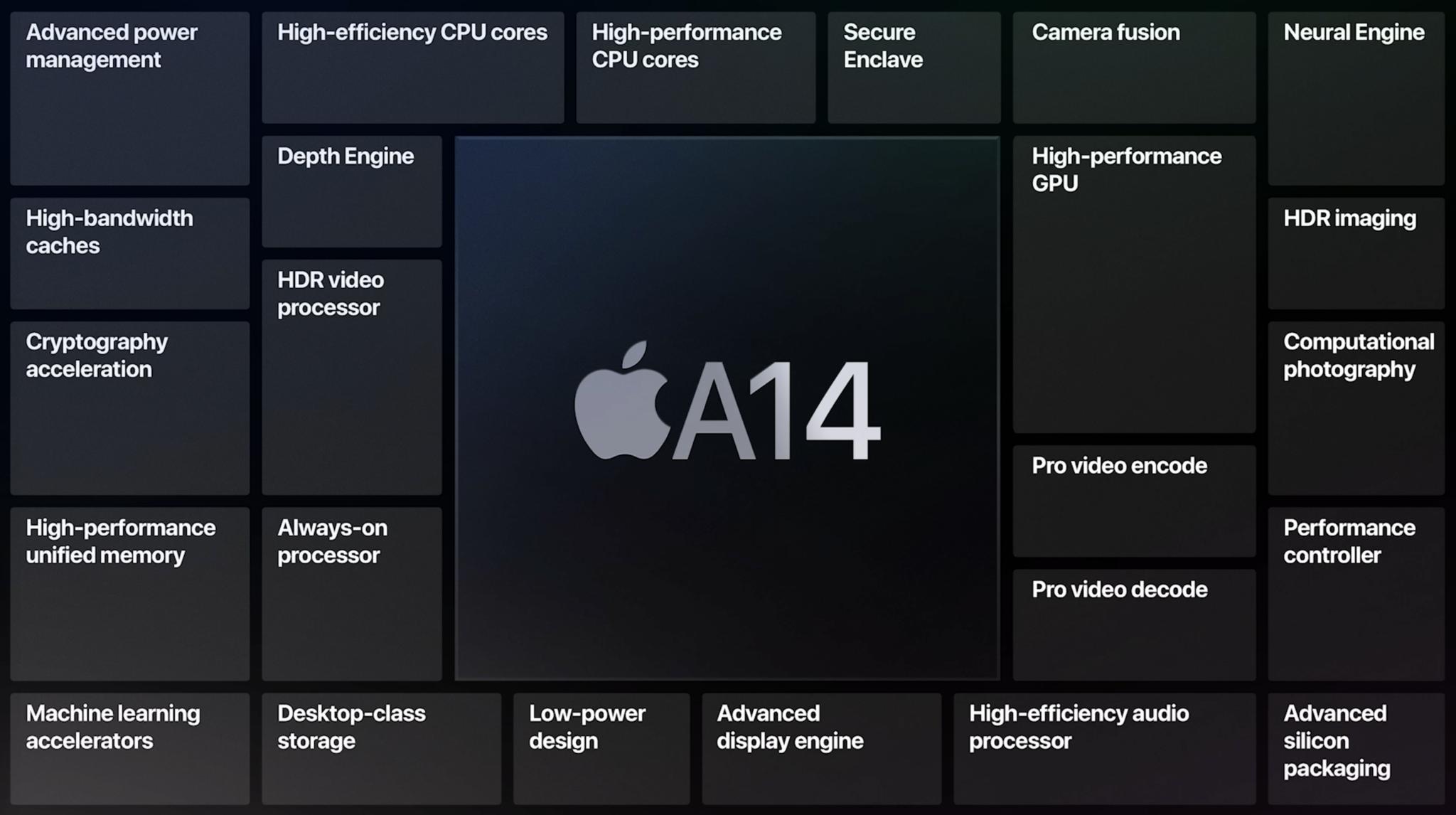Apple VPs talk A14 and the company's chip design ethos in new interview

What you need to know
- Two of Apple's VPs have sat down with Engadget to talk about its new A14 chip.
- Tim Millet, Apple's Vice President of Platform Architecture, talks about how its architects approach chip design.
- Tom Boger, Apple's Senior Director of Mac and iPad Product Marketing, says the new chip may outperform the A12Z in the iPad Pro in some cases.
In a new interview with Engadget, Tim Millet, Apple's Vice President of Platform Architecture, and Tom Boger, Apple's Senior Director of Mac and iPad Product Marketing, discuss the company's new A14 processor and Apple's approach to designing its chips.
The A14 is Apple's first processor built on a 5-nanometer process, which has increased the transistors from 8.5 billion (A13 Bionic) all the way up to 11.8 billion.
In any case, the shift to 5nm meant Apple had far more transistors to devote to all the systems on the chip. Think: 11.8 billion, up from the 8.5 billion the company had to work with in last year's A13 Bionic. As you'd expect, that huge uptick in transistor count gave Apple the extra processing bits needed to build significantly faster, more efficient CPU and GPU cores. But it also gave Apple the latitude to make more subtle improvements to a device's overall experience.
Millet says that Apple's chip architects don't necessarily think about end-user features when building new a new processer, but that their work on improving core technologies are eventually realized when it gets into the hands of developers.
"One of the ways chip architects think about features is not necessarily directly mapping (transistors) to a user feature in the product so much as enabling the underlying technology, like software in the graphics stack to be able to leverage a new capability in the GPU," Millet said. "That will inevitably come as a visual feature in a game, or in a snappy transition in the user interface."
One of the big improvements in the A14 comes with the Neural Engine. The new processor is able to compute 11 trillion operations per second, a feat made possible by packing 16 cores into the engine.
Unsurprisingly, this year's Neural Engine is a far cry from the first one we saw in 2017. While that original co-processor could perform 600 billion operations per second, last year's A13 raised the bar to 6 trillion operations in the same amount of time. Meanwhile, the A14 generally obliterates the bar by performing a claimed 11 trillion operations per second. That boost was made possible by a big redesign: The A14's Neural Engine now packs 16 cores, compared to eight in last year's A13. Doubling the engine's core count was an interesting choice since many of the iOS features that relied on it already seemed to run well enough.
Boger notes that, because of the performance of the new CPU cores in the A14 processor, the new iPad Air may actually outperform the iPad Pro in certain scenarios.
"Because the A14 has our latest-generation CPU cores, you may see a few things here and there that the A14 could potentially outperform the A12Z in," Boger noted.
Apple is expected to announce the release date of the new iPad AIr, which features its new A14 chip, at its "Hi, Speed" event tomorrow. Tim Cook and team are also expected to announce the new iPhone 12 lineup, which should also come equipped with the A14.
iMore offers spot-on advice and guidance from our team of experts, with decades of Apple device experience to lean on. Learn more with iMore!

Joe Wituschek is a Contributor at iMore. With over ten years in the technology industry, one of them being at Apple, Joe now covers the company for the website. In addition to covering breaking news, Joe also writes editorials and reviews for a range of products. He fell in love with Apple products when he got an iPod nano for Christmas almost twenty years ago. Despite being considered a "heavy" user, he has always preferred the consumer-focused products like the MacBook Air, iPad mini, and iPhone 13 mini. He will fight to the death to keep a mini iPhone in the lineup. In his free time, Joe enjoys video games, movies, photography, running, and basically everything outdoors.
